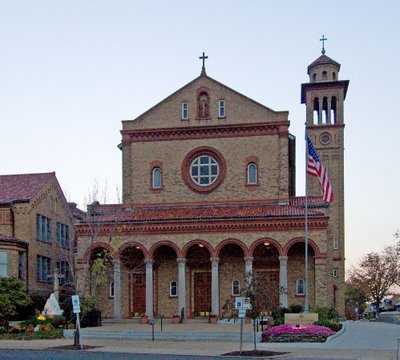
The church is inspired by the Basilica di San Paolo fuori le Mura (Saint Paul Outside the Walls), in Rome, founded in the 4th century by the Emperor Constantine.
Archbishop Glennon consecrated the church in 1928. In his career, he also founded 92 other parishes.
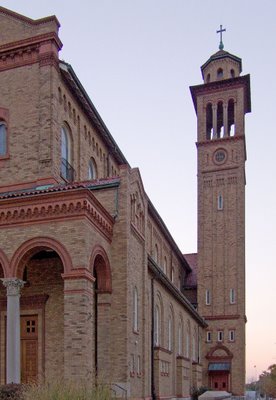
Early Christian churches did not have towers, spires, or domes. This belltower is modeled after 11th and 12th century northern Italian designs,
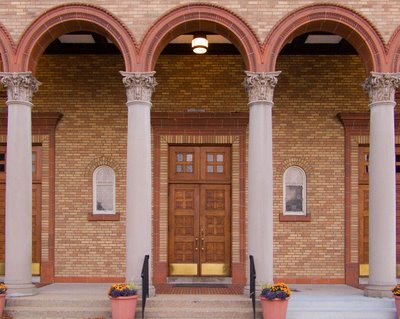
The arcaded porch is typical of early Italian churches.
The term "basilica" comes from the Greek Basiliké Stoà (basiliké meaning 'royal', and stoa, meaning 'covered porch'). Later, basilica came to mean a design of building, rectangular in plan, with a semicircular apse at one end, typically used as a law-court. Early Christians thought that this secular design was superior to pagan temple design for their churches, partially for the reason that pagan temples were not designed to house a congregation. Synagaogues in the ancient world were also often designed on the basilican plan.
"Basilica" is also a title of honor bestowed upon a church by the Pope.
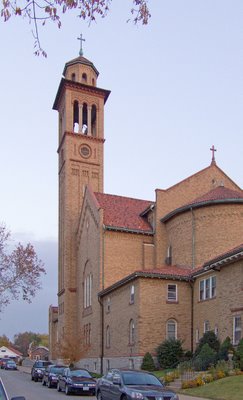
The architect was Adolf L. Stauder, member of a family of architects whose firm, Stauder Architecture, exists today, and still specializes in churches. The Hydraulic Press Brick Company produced the brick locally, and the church is ornamented with terra cotta.
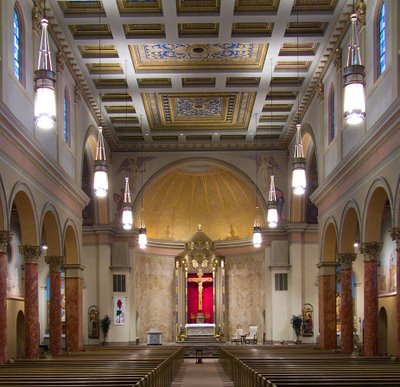
The interior was completed in 1938, and renovated in 1957. The tabernacle was removed to Mary's altar in the 1980s and restored to the central altar in 1996.
Our Lady of Sorrows is one of the venues for the Saint Louis Chamber Chorus, whose website provided some historical information on this church.
The interior photos are a bit fuzzy since I failed to use a tripod.
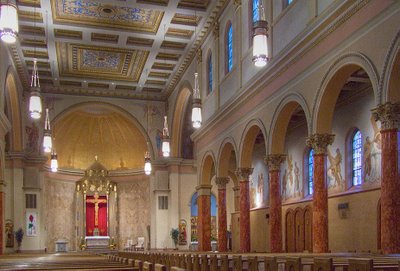
Notice the large paintings of the Stations of the Cross in the side-aisle.
According to the 2006 parish census, this church has approximately 2,207 members.
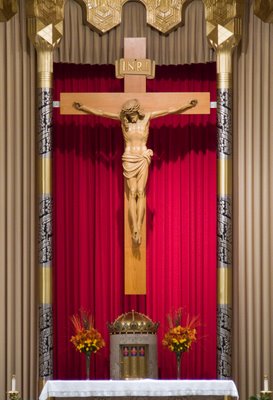
The crucifix and tabernacle.

The baptismal font and holy oils. The original baptistery, in the front of the church, to the left of the main entrance, is now a confessional.
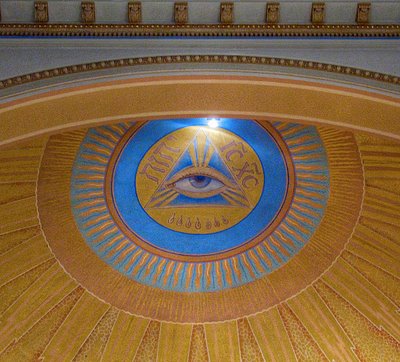
At the top of the dome in the apse.
The sacred Hebrew tetragrammaton YHWH, the name of God, and the Greek abbreviation Iesùs Christòs flank the Eye of Providence. Under the Eye are seven tears, probably symbolizing the seven sorrows of Mary.
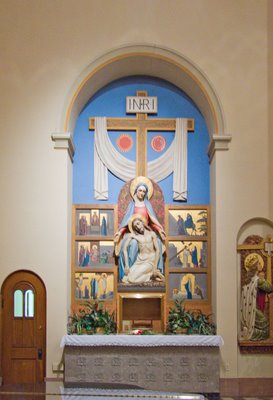
This altar memorializes the seven sorrows, or dolors, of the Blessed Virgin Mary. In bas-relief, is the pietà: she is shown holding Christ's dead body taken from the Cross.
That Mary's life would be filled with sorrow was prophesized by Simeon at the Jewish Temple: "Behold, this child is destined for the fall and rise of many in Israel, and to be a sign that will be contradicted (and you yourself a sword will pierce)". The other sorrows include the Flight into Egypt, the Child Jesus Lost in the Temple, Mary meets Jesus carrying the cross, Mary at the foot of the cross, and Mary witnesses the burial of Jesus.
The Feast of Our Lady of Sorrows is September 15th.
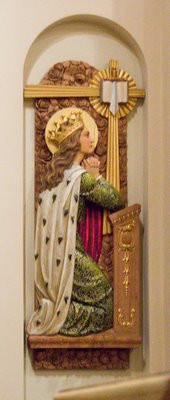
The carvings were done in Germany out of linden wood.
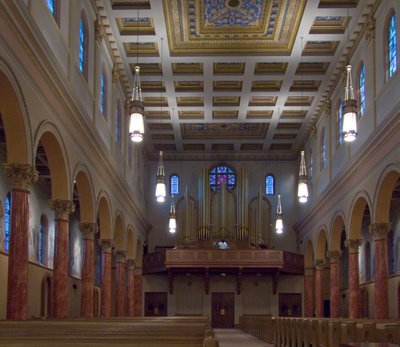
View to the back of the church. The organist was practicing at this time.
Archdiocesan web site: http://www.archstl.org/parishes/123.shtml
Mass times:
Monday-Friday: 6:30 AM and 8:15 AM
Satuday: 8:15 AM, 5:00 PM (Sunday vigil)
Sundays: 7:00 AM, 9:00 AM, and 11:00 AM
Holy days of obligation: 6:30 AM, 8:15 AM, and 7:00 PM
Confessions:
Saturdays: 3:30 - 4:45 PM
Tuesday, Thursday, Saturday: 15 minutes before morning Mass
Address:


I was told by a previous pastor that the side altar has a pilgrimage indulgence attached to those devoted to Our Lady of Sorrows and the pieta.
ReplyDeleteThanks! I did not know.
ReplyDelete